Workshop Guide to Wheel Bearings
By Steve Cooper, VJMC Editor
Every motorcycle depends on its wheel bearings for a decent quality ride. Upgrade to the stickiest tyres out there, fit the best suspension available, blow the budget on adjustable fork-angle yokes but if your wheel bearings are knackered you’ll be wasting your hard earned cash. In almost every wheel fitted to a motorcycle there’s two pairs of ball races carrying the entire weight of both you and your bike. Whether that’s a nifty fifty or a fully dressed Wing your forward momentum is entirely reliant upon just a handful of individual ball bearings at any given moment in time. And those balls and the races that house them are lubricated by a splodge of grease applied by the manufacturer how many years ago? Boiled down to their basics it’s amazing the amount of work wheel bearings do yet we take them totally for granted. You probably pay more attention to the spokes of your wheels than you do to the bearings. Out of sight out of mind etc. as they say.
Most of us will probably only ever look at our wheel bearings during the course of a rebuild, a restoration or material failure. If you’re really diligent you might check them for wear at service or MOT time but that’s as much attention as they ever normally see. And, arguably, that’s how it should be; properly lubricated they should and can last the life of a vehicle but if one starts to wear what do you do? Project Kawasaki Hybrid had sat outside for years and as a consequence its wheel bearings were less than happy at being moved. Taking no chances they were going to be replaced come what may. As the bike is the subject of a full rebuild I’ll be working with the bare hubs; the spokes and rims have been removed. If you were carrying out a ‘running repair then you’d have to factor in space to accommodate the wheel complete with tyre yet the same rules apply. Everyone has their own pet way for jobs like this but what follows is a methodology that’s worked well for me over the years.
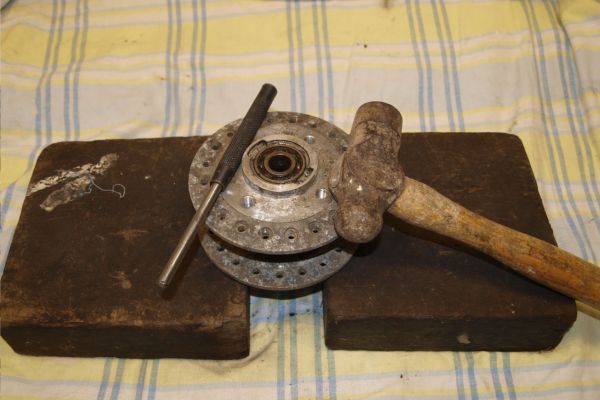
A pair of stout wooden blocks support the hub outside of the bearing area. A decent punch without burrs and a large but controllable hammer are the tools of choice
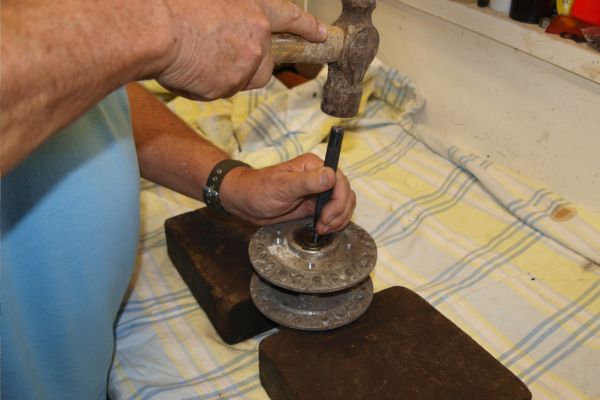
Carefully levering the internal bearing spacer to one side the drift is engaged with the edge of the inner race. When it’s securely in place the hammer is called into action with one defined firm strike.
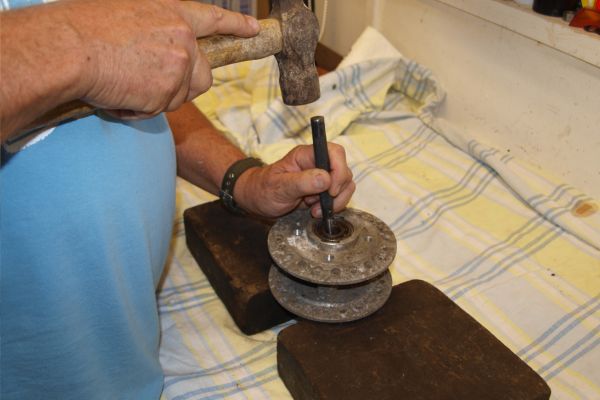
Carefully and precisely working around the periphery of the inner race successive blows move the bearing slowly out of its housing. As it begins to move the presence of the bearing spacer becomes less intrusive.
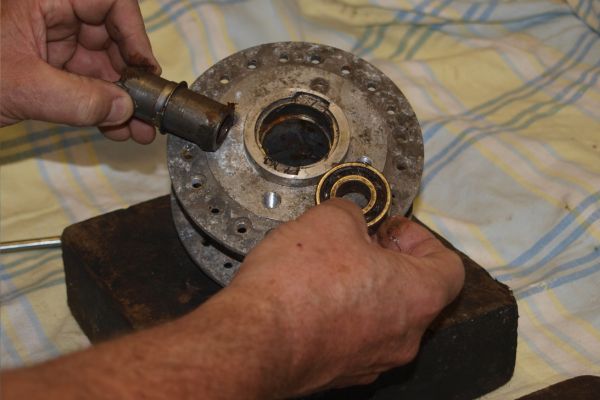
And before too long the bearing is free of the housing along with the spacer. Some hubs run different sized bearing on either side so it’s important to note which one goes where.
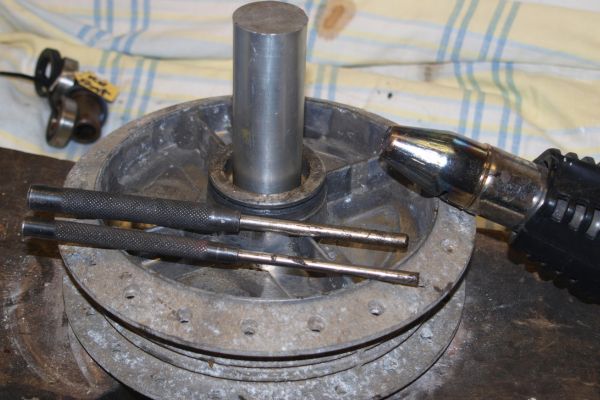
When a bearing is stuck fast controlled heat can often help. Experiment with different sized punches and if one bearing is already out consider an appropriate sized drift to aid removal.
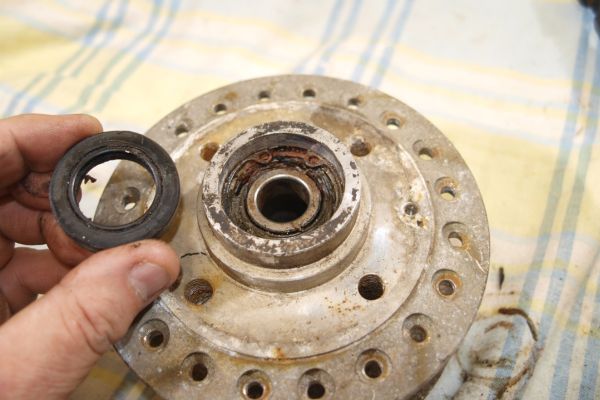
Seals and circlips need to be removed before bearing eviction is attempted. The circlip has corrosion welded itself into it register. Penetrating fluid and heat may be needed here.
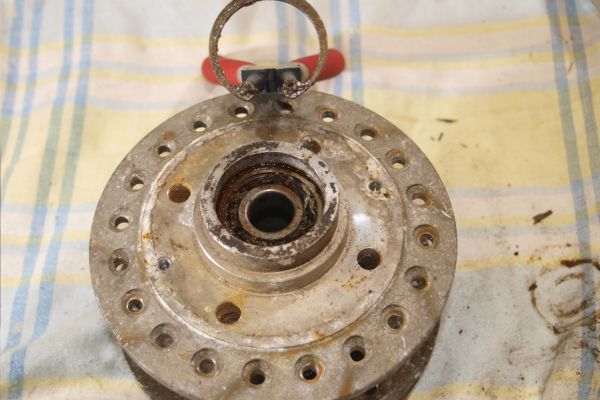
Even though, eventually, the circlip was freed off it was still difficult to remove due corrosion attacking it. Only ever use decent circlip pliers, never attempt to prise circlips out with screw drivers.

The four bearings are all full of dirty grease and most show evidence of rust. Factoring in how long they lay outside they will be replaced but not before I’ve cleaned one up to illustrate fitting new ones.
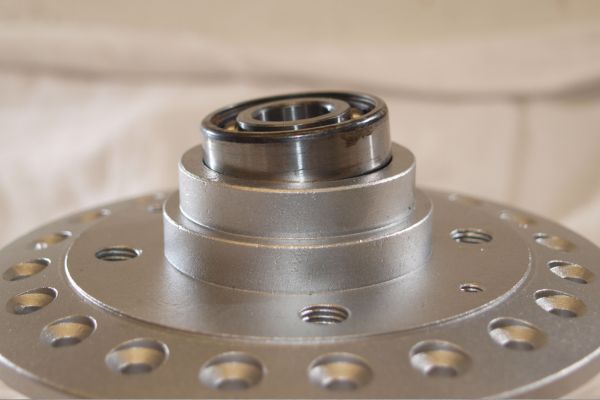
Bearings must be installed perpendicular to their housings. At this angle it’d never fit but just a few degrees out of true can perpetuate a disaster when the bearing becomes stuck at an angle in its housing. Time spent here getting everything true will be disproportionally rewarded later.
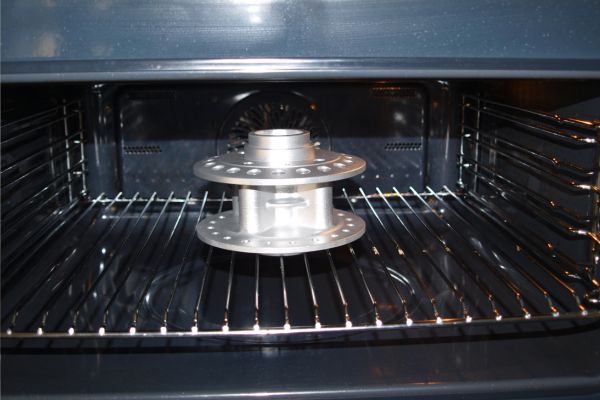
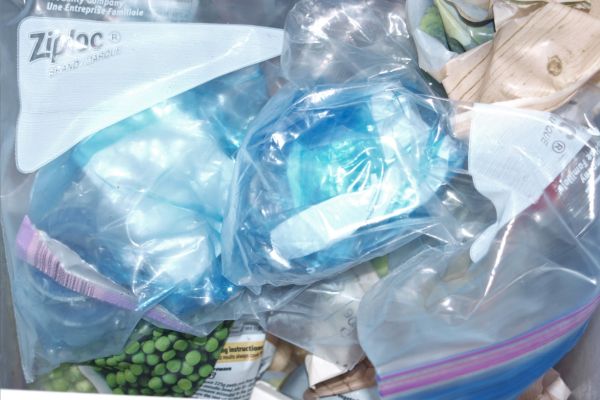
Heating hubs and freezing bearings makes the job so easy. The family oven may be a big ask but the vapour blasted hubs is spotlessly clean – honestly! A few days in the freezer significantly shrinks the bearings.
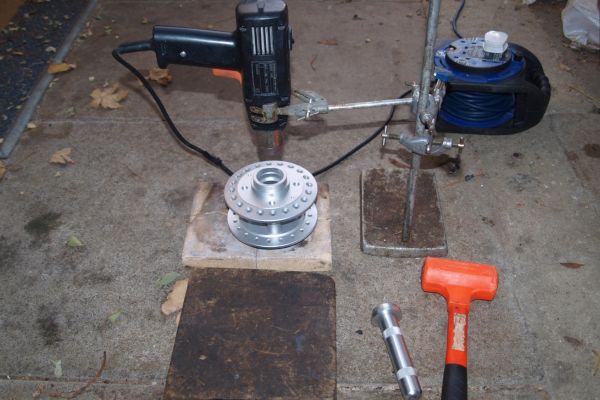
Alternatively heat the hub up outside with a hot air gun if ‘the real boss’ vetoes the oven idea.
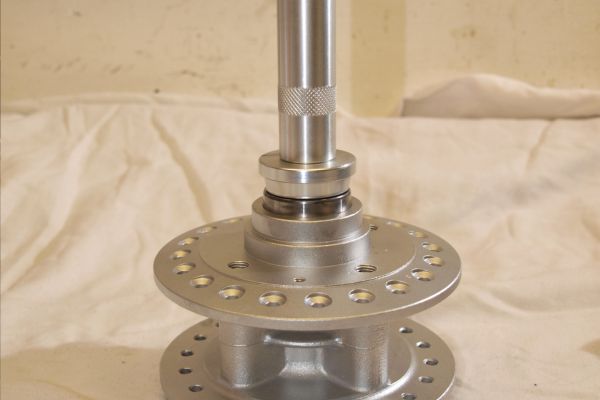
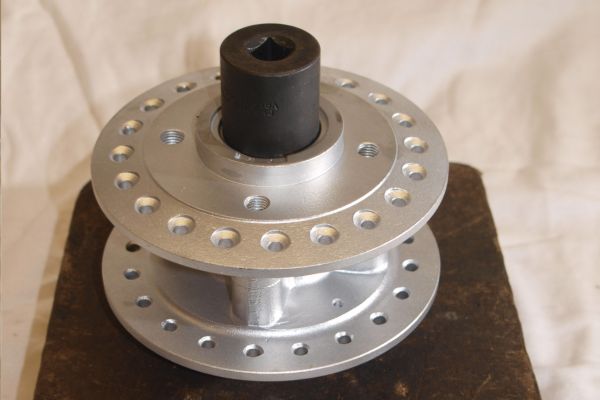
With the bearing true at the top of its housing or register it needs to be driven into place via force applied to the OUTER race not the inner. Either a suitably sized socket or purpose made bearing drift are fine. With a hot hub and frozen bearing the job should only take minimal effort.
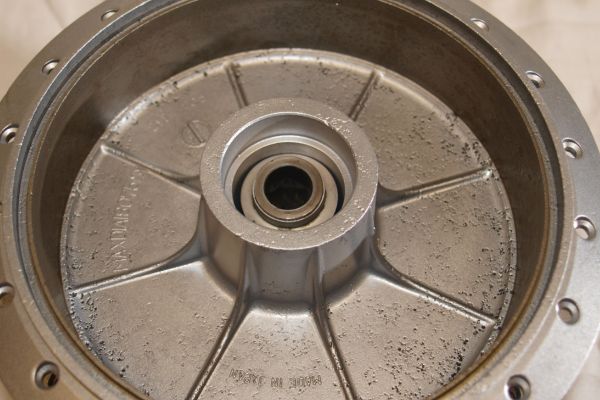
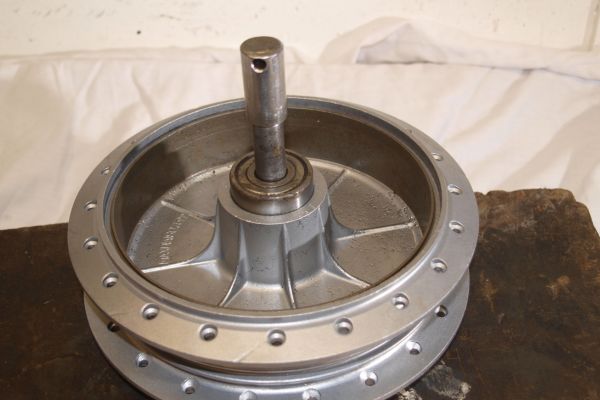
With the first bearing installed drop in the bearing spacer, flip the hub over then line everything up using a wheel spindle or mandrel.
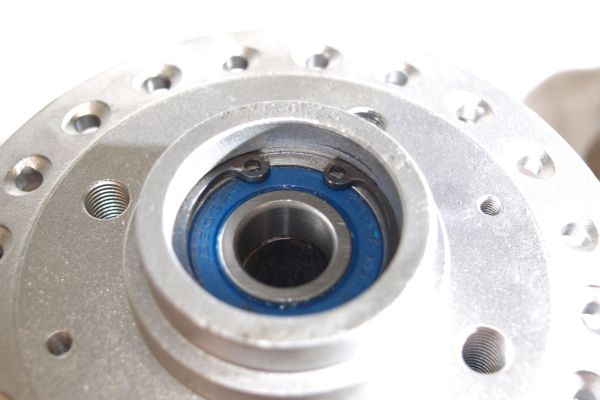
The old circlip actually cleaned up surprisingly well but if there’s any doubt buy a new one for peace of mind and your own safety.
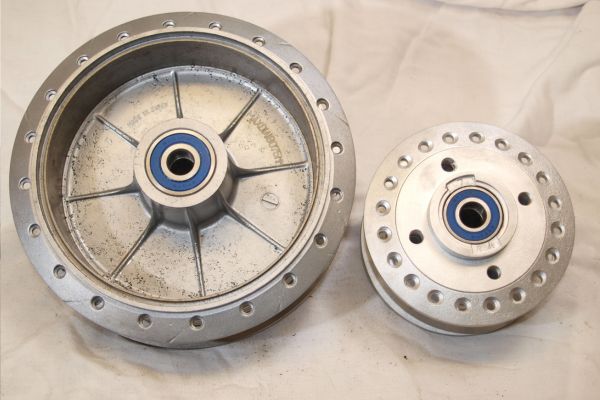
And there they are; a pair of cleaned Kawasaki KH250 hubs with new bearings ready to be sent off to Central Wheel Components to be mated to new rims with stainless spokes.
When wheel bearing removal and replacement goes as planned it’s a rewarding task to undertake; get it wrong and it can be pure pain. If a bearing won’t drift out make sure no seals or circlips have been missed. If there’s any rust or suspicion of corrosion use a penetrating fluid. Never attempt bearing removal on a flimsy bench as you’ll squandering most of you effort. If all else fails beg access to a hydraulic press and let it work its magic. The installation of bearings needs to be organised; have the hub hot, the bearing cold and all the tools you need to hand ready. Expand the former, contract the latter and everything should almost fall into place.
Do you have any helpful hints and tips for maintaining or changing your wheel bearings? Let us know in the comments.
For more technical advice, visit Motorcycle Workshop Guides: The Complete List.
To find out more about a classic bike policy from Footman James and to get an instant quote online, visit our Classic Bike Insurance page.
The information contained in this blog post is based on sources that we believe are reliable and should be understood as general information only. It is not intended to be taken as advice with respect to any specific or individual situation and cannot be relied upon as such.

COMMENT